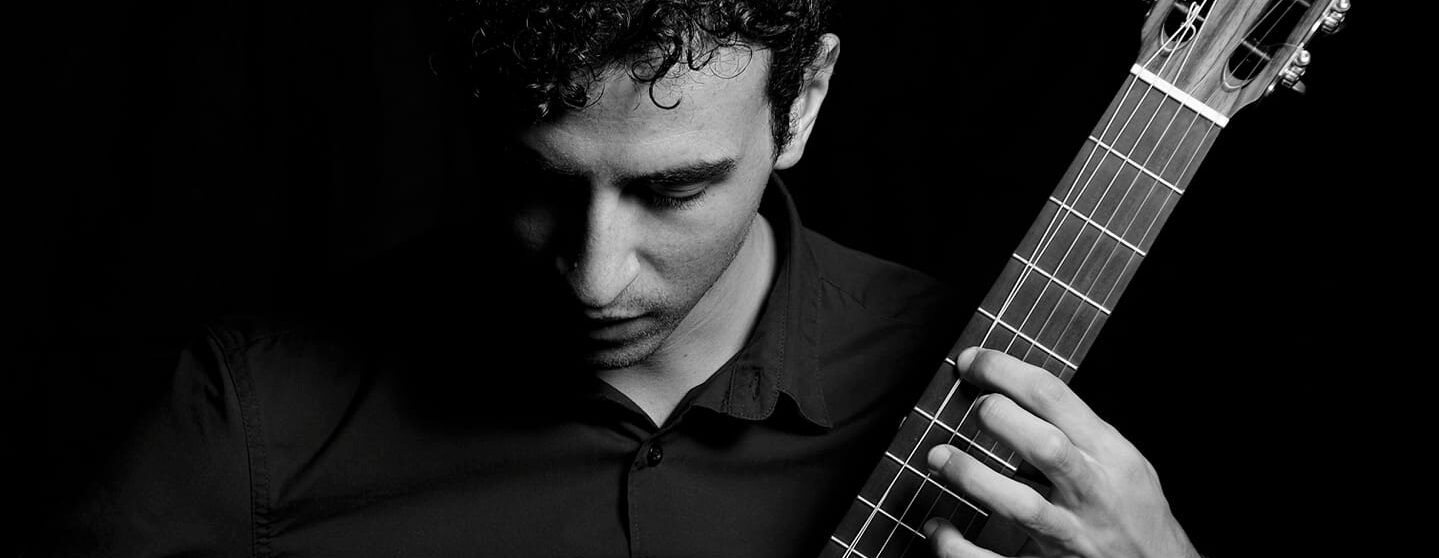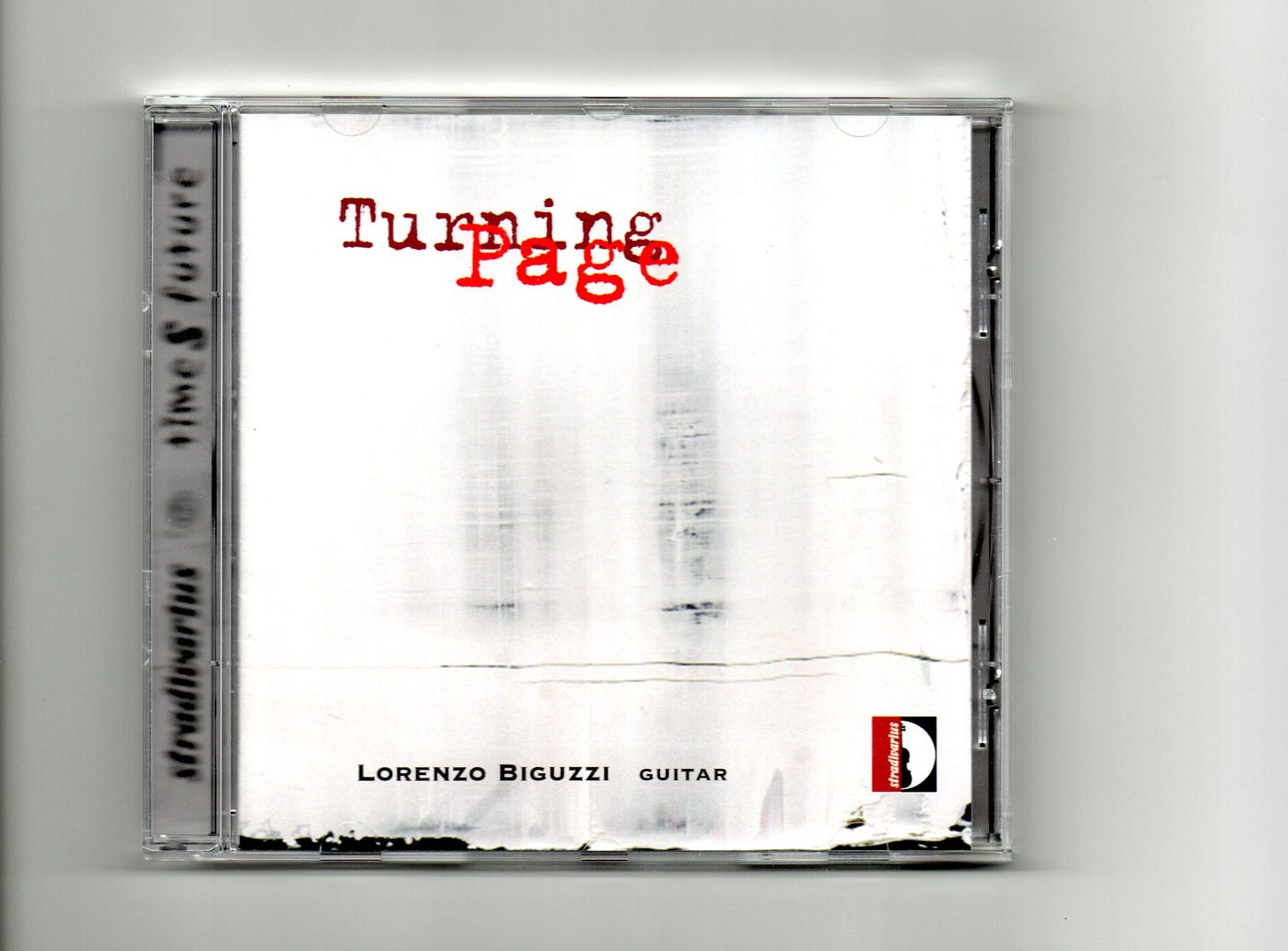Neuguitars 2024 #35 Pattern Recognition in Contemporary Classical Guitar Music: “Turning Page” by Lorenzo Biguzzi
Stradivarius, 2023
“Homo sapiens is about pattern recognition,...Both a gift and a trap.”
William Gibson, Pattern recognition, pag. 23
Contemporary classical guitar music disorients me. This musical niche manages to combine some curious and apparently out of time aspects, uniting a creative attitude typical of classical music (the separation and specialization of two distinct figures: the composer and the performer) with an idea of the classical guitar that is very different from both its “classical” and its “popular” role. I think this disorientation towards contemporary classical guitar music is easily understandable: it is a musical niche that subverts many of the traditional expectations related to the instrument and its function. This genre seems to occupy a unique territory, in which tensions between the past, the present and an uncertain future coexist.
This post was built around some reflections matured through listening to an excellent contemporary music CD: “Turning Page”, the work of the Italian guitarist Lorenzo Biguzzi and produced by the independent record company Stradivarius in 2023. This CD places particular attention on six pieces, the work of six Italian composers, composed over a period of almost sixty years and requires, in addition to a dutiful praise towards the composer and the performer, a pause for reflection to better analyze this musical niche.
One of the most distinctive aspects of classical music, which persists even in its contemporary declination, is the separation of the figures of composer and performer. This approach is rare in the guitar, which in the popular tradition or even in fields such as jazz and more experimental forms linked to ambient and sound art, tends to unite these two figures. In contemporary classical guitar music, however, the performer often finds himself working with extremely complex musical material, written by composers who explore unconventional performance techniques, microtones, percussion on the body of the guitar or the use of different forms of preparation of the instrument.
The contemporary classical guitar also challenges traditional notions of the instrument: it is not “classical” in the traditional sense, because it often renounces the lyrical and melodic repertoire associated with figures such as Segovia or Tárrega, to embrace a more experimental and dissonant aesthetic. It is not “popular”, because it distances itself from the immediate, accessible and rhythmic language that characterizes the guitar in folk or pop genres.
Instead, the guitar in this context becomes a sort of sound laboratory, in which the timbric research and the technical possibilities of the instrument are pushed to the limit. It is an instrument that, while maintaining a strong individual and intimate imprint, opens up to a complexity that often requires a more analytical than emotional listening. A forge of prototypes and models of thought.
In this sense, contemporary music for classical guitar belongs neither to the past nor to the future, but is situated in a continuous present of exploration. This makes it fascinating, but also not very accessible: it requires the audience to abandon predefined categories and accept uncertainty as part of the experience. Perhaps the disorientation I feel is precisely the sign of its artistic strength: this music forces me to rethink what I thought I knew about the instrument, about the roles of those who play or compose it, and about how to listen to it. Every time I listen to this CD I feel the need to approach each piece as if I had never listened to one, thus escaping the narrative that each of us assembles, consciously or unconsciously, from the moment of first listening. It is true, homo sapiens is linked to the recognition of thought patterns. A gift and a trap at the same time, writes William Gibson.
At the same time, since this is contemporary music, experimentation, you wonder what future it is trying to express. This music reflects a deeply contemporary vision of time and uncertainty. The "future" as previous generations understood it, a relatively stable and predictable horizon, has become an elusive idea in our era. The speed of technological, social and environmental changes has made the present so unstable that a long-term narrative cannot be built with the same solidity as in the past.
We live in a context in which continuity is replaced by fragmentation and improvisation, where the ability to navigate a chaotic present becomes more important than imagining a distant tomorrow. This music offers, instead, not a pessimistic observation, but an invitation to rethink our relationship with time and change: if we can no longer build the future as a linear projection, perhaps we can rebuild it through continuous innovation and resilience.
No listening, no music, no trends. What I am trying to identify with this blog is a pattern of group behavior around a particular class of music. I am trying to recognize a pattern before anyone else. After all, the future is always there, looking back at us, and I am trying to trace a thread in the story that could be.
“We have no future because our present is too volatile.We have only risk management. The spinning of the given moment’s scenarios. Pattern recognition.”
William Gibson, Pattern recognition, pag. 48





